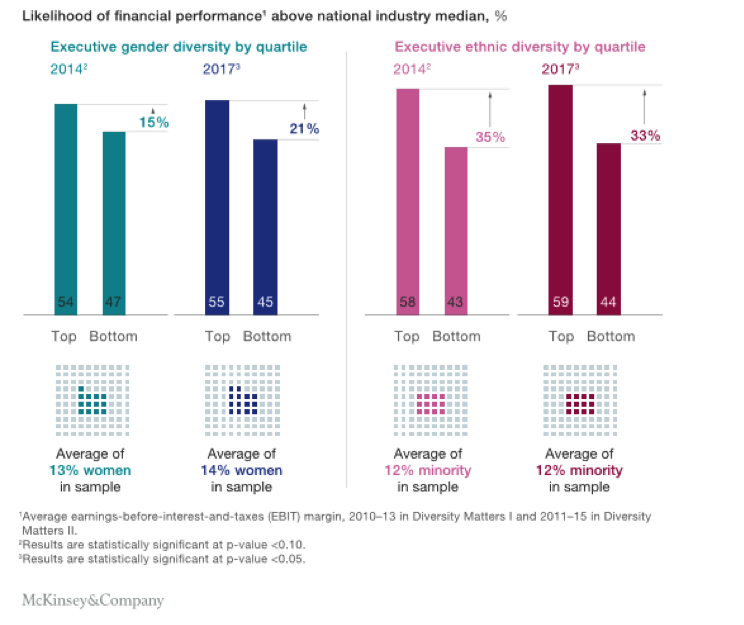Why diversity and inclusion is good for business
Ahead of the “Women in Payments” panel at PayExpo 2018, Andrea Dunlop of the European Women in Payments Network (EWPN) advisory board and CEO merchant acquiring Europe at Paysafe Group, breaks down what diversity and inclusion really means.
A change on the horizon
There is no doubt that diversity and inclusion is on the agenda for all executive teams and leaders. Certainly, over the last ten years I have seen much more discussion on this across all areas of the industry.
But what does diversity and inclusion mean? So often it seems to just be associated with gender equality, but it’s so much broader than that. I was reminded about this on a recent panel, which has got me thinking: what constitutes an inclusive working environment?
Let’s face it, we have all at times felt unrecognised, unable to use our voice. I know I have. So, in my mind, being inclusive is about creating an environment that thrives on our differences. A professional culture that recognises people are different and there is nothing wrong with that; where everyone has a valuable contribution to make; where no one is discriminated against based on their race, religion, sex or sexual preference.
Everyone deserves the opportunity to develop skills and talents to reach their full potential in a safe, supportive and inclusive environment. And, be rewarded fairly, recognised and able to speak up on matters that impact them, as well as benefitting from a range of perspectives in the decision-making process is acknowledged.
It is also important to appreciate that a “one-size-fits-all” approach is not the reality. People have different needs, so a flexible approach designed to support individual and business needs is required. This is clearly the case with dyslexia, autism and ADHD. It’s estimated that at least 10% of the UK population is neurodivergent, with mental health impacting one in five people in the UK. However, most workplaces are not set up to support all these aspects, so employers are possibly missing out on people who bring a different perspective to an organisation.
While there is legalisation covering aspects of age, disability, race, religion, gender and sexual orientation among others, these are the minimum standards. An effective diversity and inclusion strategy must go beyond just legal compliance.
In the late 1990s and early 2000s, Morgan Stanley paid out $54 million, and Smith Barney and Merrill Lynch paid out over $100 million each to settle sex discrimination claims. In 2007, Morgan Stanley faced a new class action which cost the company $46 million. In 2013, Bank of America Merrill Lynch settled a race discrimination suit for $160 million.
I am sure much lip service has been paid to diversity and inclusion programmes over recent years, but there is good evidence that shows that companies perform better when they have a diverse workforce. It must be a company-wide mission where each employee knows they are valued, and is held accountable for their contribution in return.
Diversity and inclusion is good business
But why should boards and executives ensure that companies have diversity programmes in place that foster an inclusive culture? Analysis shows that companies in the top quartile for gender or racial and ethnic diversity are more likely to have financial returns above their national industry medians.

In 2015, a report from McKinsey revealed:
- Companies in the top quartile for racial and ethnic diversity are 35% more likely to have financial returns above their respective national industry medians. For gender diversity, this figure is 15%.
- Companies in the bottom quartile both for gender and for ethnicity and race are statistically less likely to achieve above-average financial returns than the average companies in the data set (that is, bottom-quartile companies are lagging behind, rather than merely not leading).
- In the US, there is a linear relationship between racial and ethnic diversity and better financial performance: for every 10% increase in racial and ethnic diversity on the senior-executive team, earnings before interest and taxes (EBIT) rise 0.8%.
- In the UK, greater gender diversity on the senior-executive team corresponded to the highest performance uplift: for every 10% increase in gender diversity, EBIT rose by 3.5%
- No industry or company is in the top quartile on both racial and ethnic diversity and gender diversity.
In 2017, McKinsey updated the figures. The companies in the top quartile for gender diversity which were 15% more likely to have greater financial returns, are now 21% more likely to perform above the national industry median.
So there is plenty of evidence to suggest a strong business case for diversity. Though sadly it is clear that the progress of diversity in senior and exec management is still slow globally.
We all want to work in environments where employees can share their ideas, take considered risks, speak up without fear and be their true self. After all, no one has the monopoly on great ideas. It’s also broadly acknowledged that a diverse workforce helps companies develop products and services that meet needs of the wider society, not just the few.
Ensuring diversity programmes are not paying lip services
I am not saying that creating a diversity and inclusion strategy is easy and will solve these issues – it’s no small effort and requires strong, sustained, and inclusive leadership. But the culture and identity of a company comes from its leadership and the people within it, not just a branded exterior. What’s more, just because a company has a diversity programme in place, doesn’t mean that it has addressed bias.
So what can companies, execs and leaders do to ensure success? Well, I’m a firm believer in the idea that the most effective diversity programmes are about engagement at all levels. It is this, rather than control tactics, which spark success.

What needs to happen
Diversity is good for business. As of this year, it’s been propelled to the top of the agenda across many industries. But even though the benefits are being recognised, I believe diversity still has to be forced, or else natural selection bias may lead us to replicate the learnt behaviours of the past.
However provocative the commitments from the boardrooms (which are still too often full of white males) may be, too many performance measurements continue to be based on the same metrics that would be appropriate for anyone. This includes sales achieved, the delivery of functional points, number of applications processed, and so on.
If companies truly want to address the imbalance, they need to adapt a longer-term strategy, adopt an inclusive approach from the inside out and live it every day – not just pay lip service.
 Andrea Dunlop is also the 2018 winner of Fintech Futures’ Woman in PayTech Award. Click here to view the full list of the PayTech Awards 2018 categories, winners and highly commended as well as the photos from the event!
Andrea Dunlop is also the 2018 winner of Fintech Futures’ Woman in PayTech Award. Click here to view the full list of the PayTech Awards 2018 categories, winners and highly commended as well as the photos from the event!













































How can i as culture, diversity and inclusive officer propel the spirit of culture diversity in male dorminatinated working environment? What some strategies i can pursue to bring a high communicative environment for foreignera and locals to work together as a team and create environment where everyones is free give their points of views and positive feedback on the views are recognised by the managment or team team leaders.